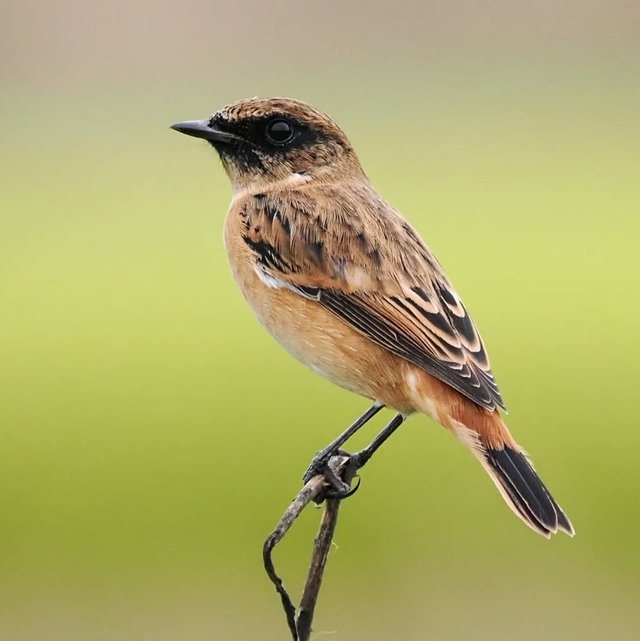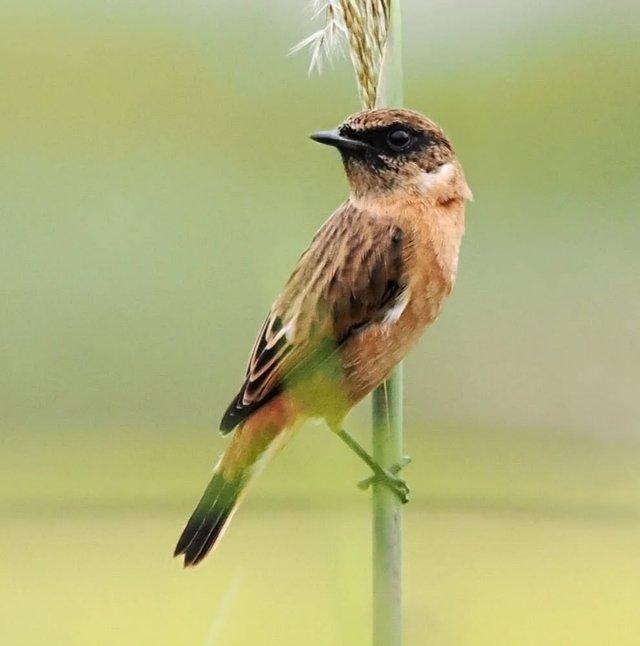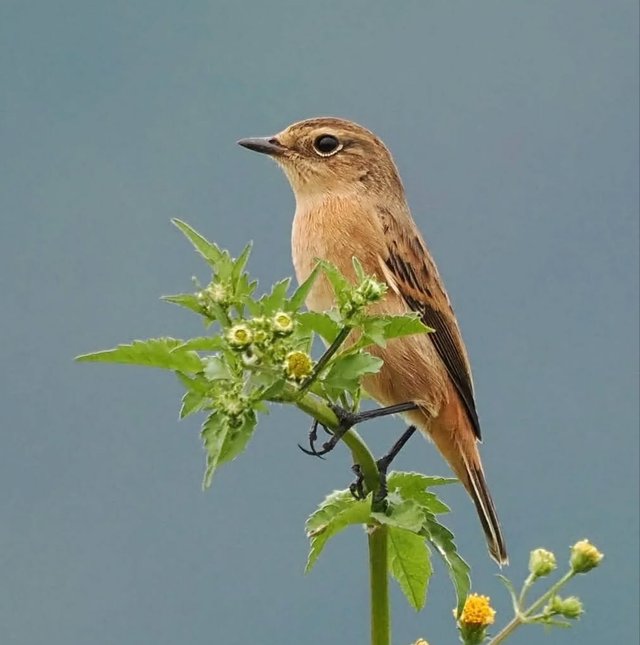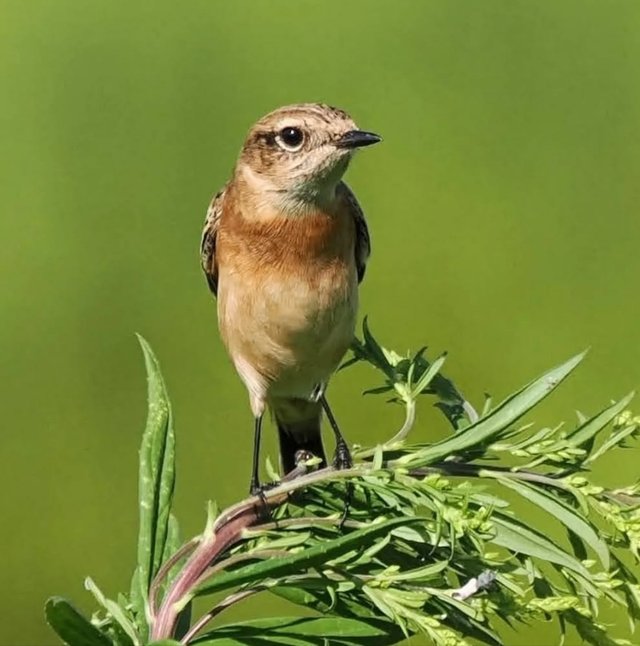So Cute European Stonechat Bird
The is a small but striking bird that brings charm and vitality to the open landscapes of Europe. With its vivid plumage, energetic behavior, and melodic calls, this bird stands out as one of the most delightful members of the Old World flycatcher family, Muscicapidae. It is a common sight in heathlands, grasslands, and coastal scrub, where it perches on shrubs or fence posts, flicking its wings and tail while emitting its characteristic sharp call — reminiscent of two stones being tapped together, which inspired its name “stonechat.”
The European Stonechat is a compact bird, measuring about 12–13 centimeters in length. Males are particularly eye-catching, with their black heads, white neck patches, and rich orange-red breasts. Their upperparts are dark, giving them a smart, contrasty appearance that becomes even more pronounced during the breeding season. Females and juveniles, on the other hand, display softer tones — brownish upperparts with a pale orange wash on the breast and a hint of white around the neck, offering them better camouflage in grassy habitats.
This species is widespread across Europe, extending into parts of North Africa, the Middle East, and western Asia. Stonechats thrive in open, sunny habitats with scattered shrubs — ideal for perching and hunting insects. They are often seen in heathlands, moors, fallow fields, and along coastal dunes. While populations in southern and western Europe are generally resident, those from colder northern and eastern regions migrate southward during winter, reaching as far as North Africa and the Mediterranean basin.
European Stonechats are highly active birds, often seen perched prominently on a twig or post from where they scan for insects. Their flight is quick and darting, often accompanied by a flick of the tail. They feed primarily on insects such as beetles, flies, caterpillars, and spiders, but during colder months when insects are scarce, they may also consume seeds and small berries. Their feeding style is typical of flycatchers — perching upright, then making short flights to snatch prey from the air or the ground.
The breeding season generally begins in early spring. Pairs form strong bonds, often remaining together for several breeding seasons. The female constructs a well-hidden nest close to the.




